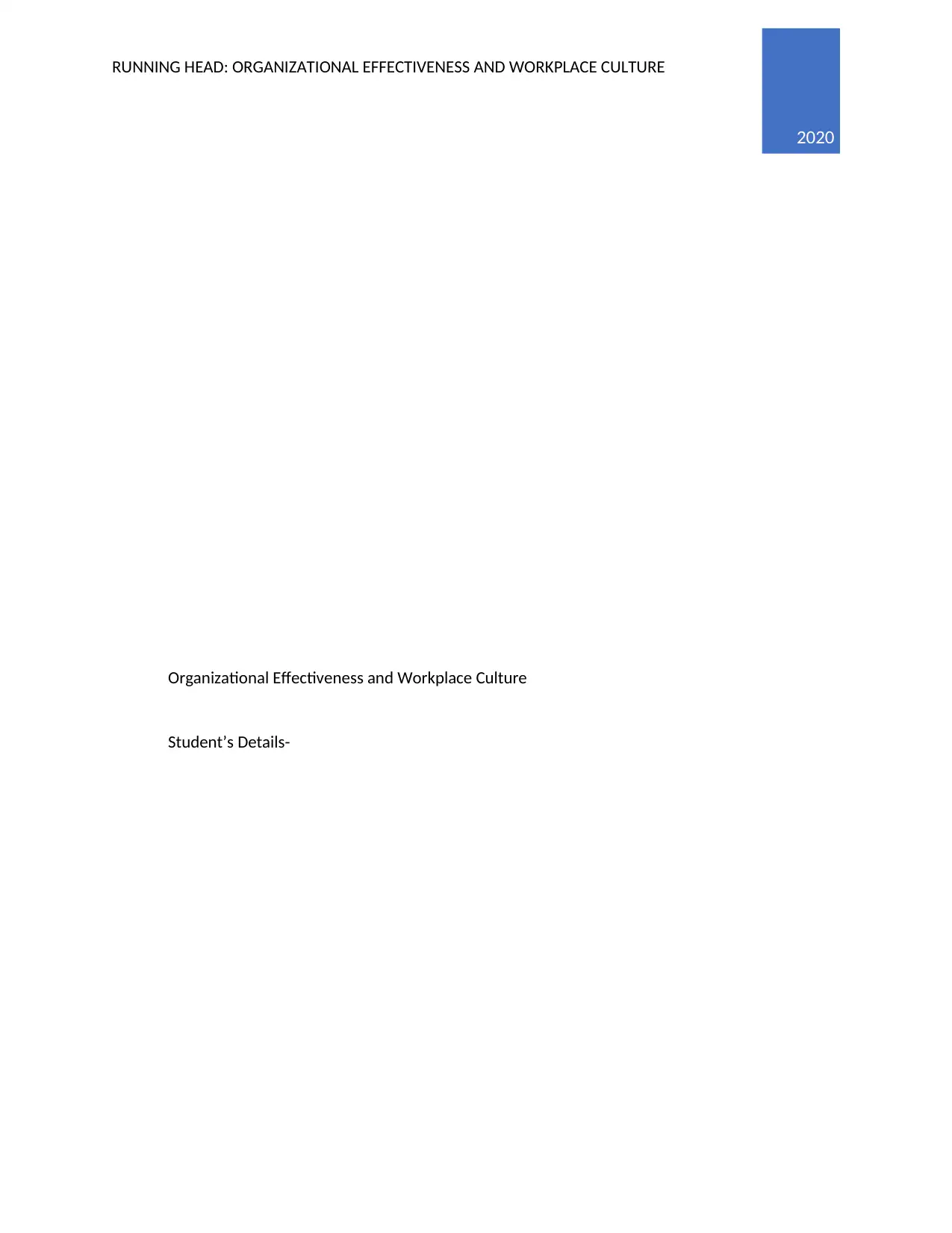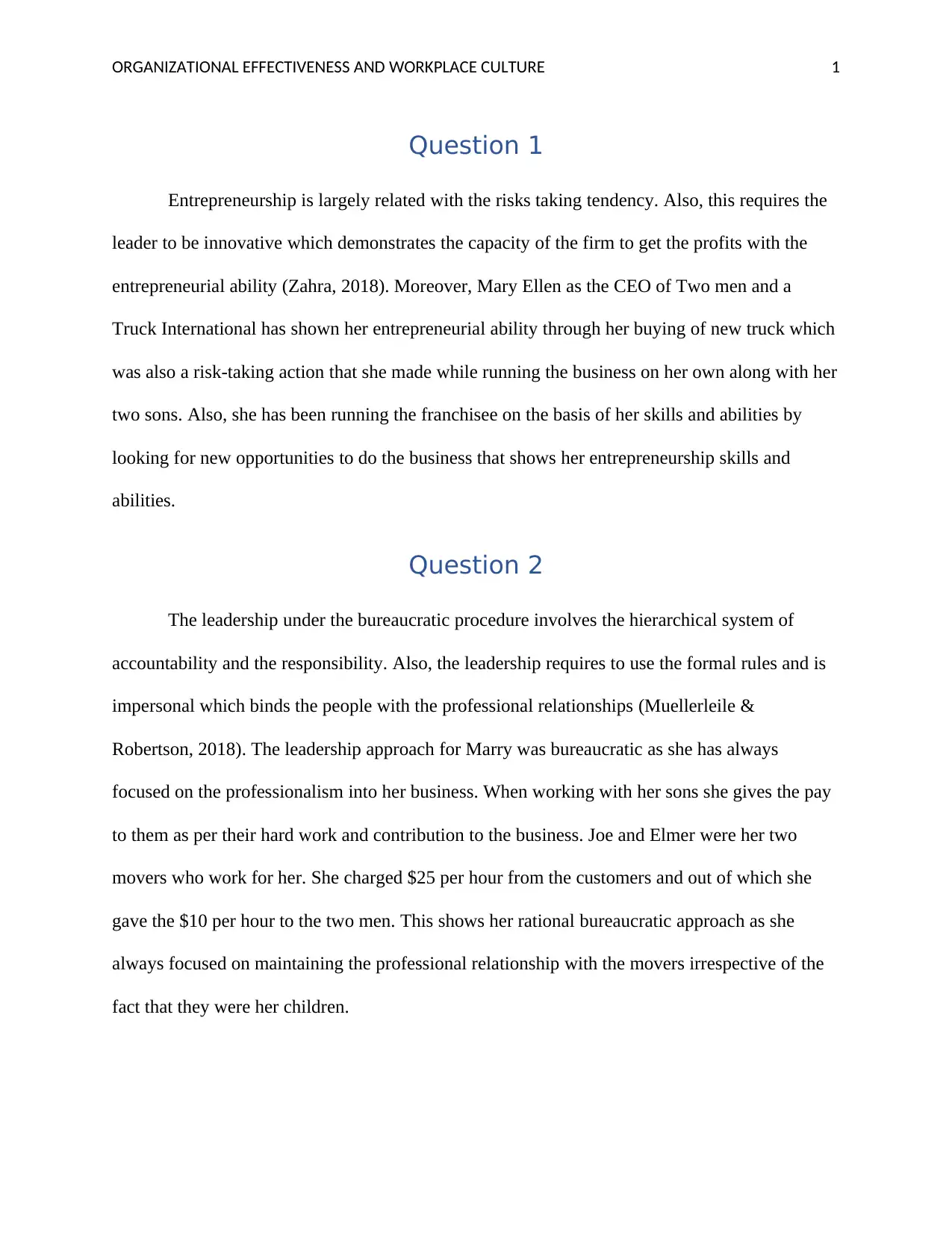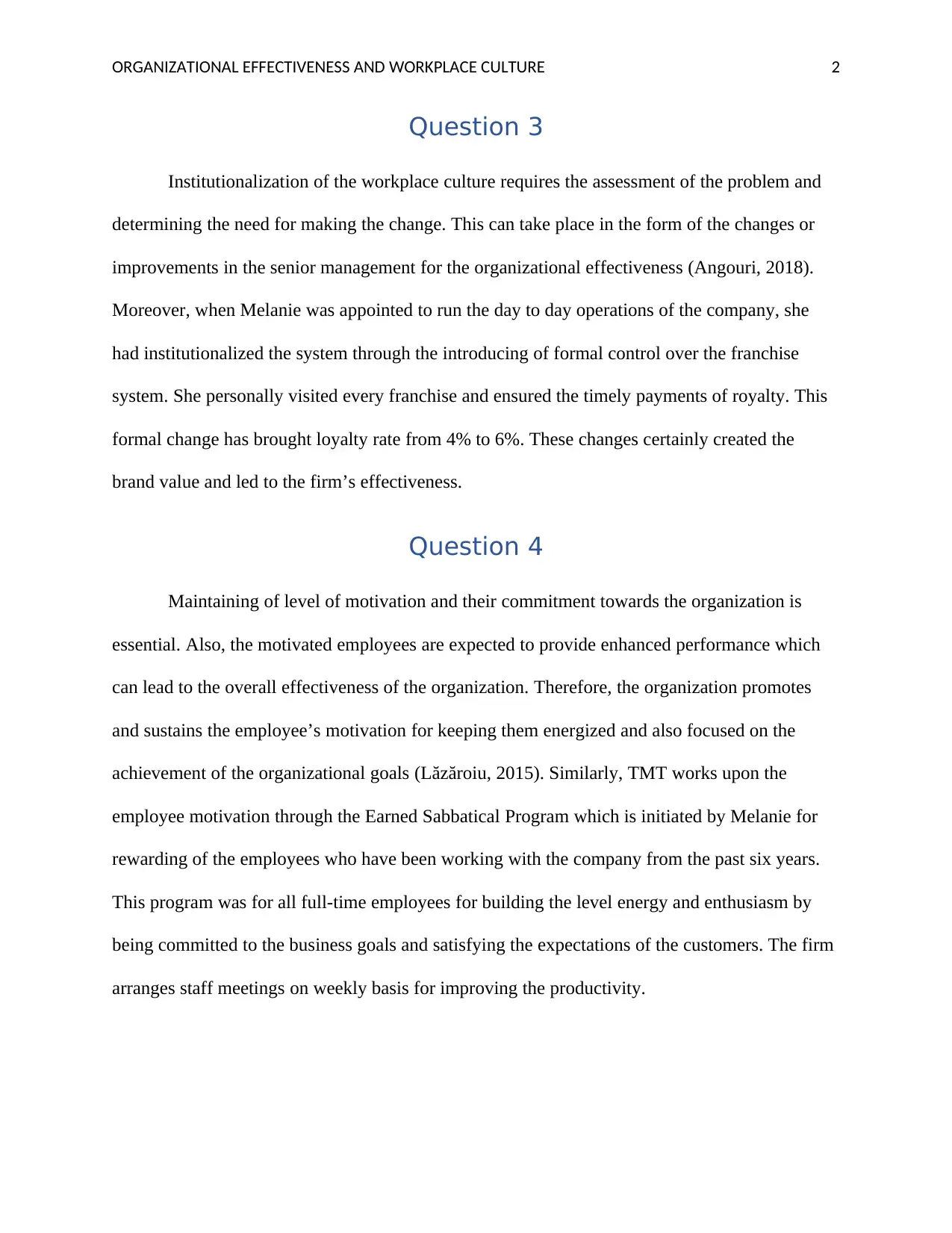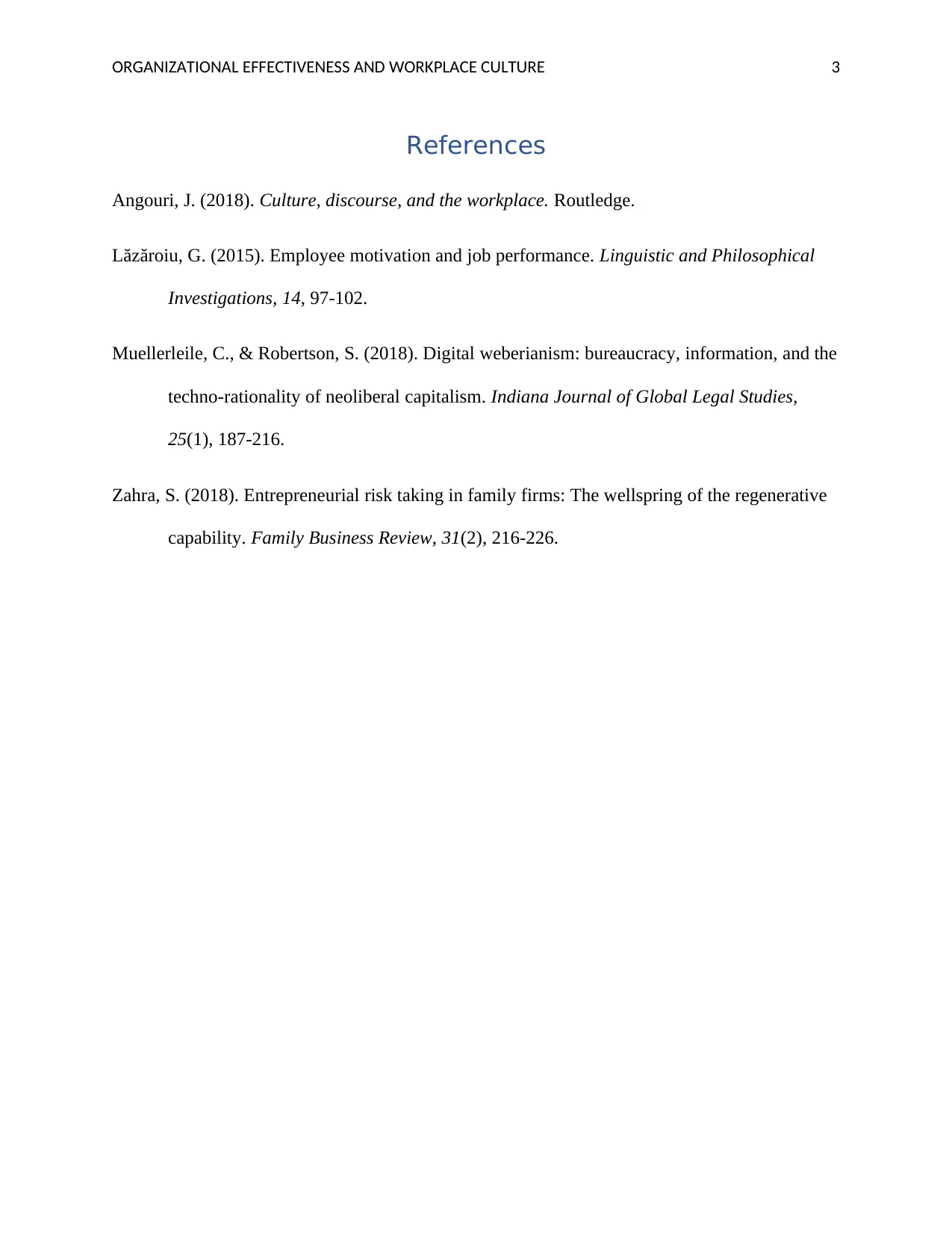HRES1101 Winter 2020: Organizational Effectiveness Case Study
VerifiedAdded on 2022/09/09
|4
|695
|21
Case Study
AI Summary
This case study analyzes the organizational effectiveness and workplace culture of "Two Men and a Truck International," a franchise-based moving company. The analysis addresses key aspects such as leadership styles, including entrepreneurial and bureaucratic approaches, and how these impact the company's success. The case study examines risk-taking tendencies, the introduction of formal processes, and the institutionalization of culture through various tactics. Furthermore, it investigates the strategies employed to maintain employee motivation and commitment, including programs like the Earned Sabbatical Program, and how these efforts contribute to achieving organizational goals. The provided solution answers questions regarding entrepreneurship, bureaucratic leadership, cultural institutionalization, and employee motivation within the context of the case study.
1 out of 4









![[object Object]](/_next/static/media/star-bottom.7253800d.svg)